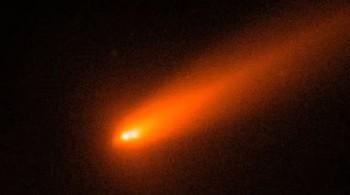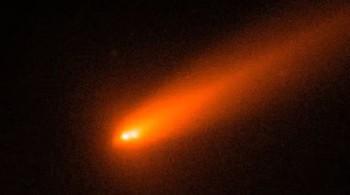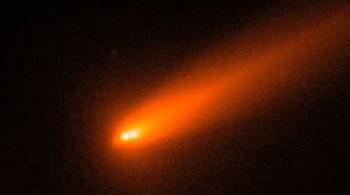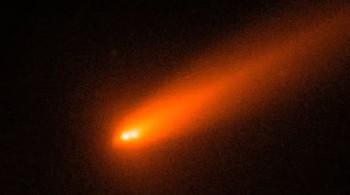
Comet C/2025 K1 (ATLAS) breaks into 3 after coming close to Sun
In a stunning astronomical event, Comet C/2025 K1 (ATLAS) has broken into three pieces after swinging too close to the Sun. This rare occurrence was captured by astronomers using Italy’s Copernicus telescope, providing a unique glimpse into the comet’s fragile structure. The comet’s nucleus became unstable after it passed close to the Sun on October 8, resulting in a spectacular breakup that has left scientists fascinated.
Comet C/2025 K1 (ATLAS) was first discovered in May 2025 by the Asteroid Terrestrial-impact Last Alert System (ATLAS) survey. Initially, it was thought to be a single, intact comet, but as it approached the Sun, its behavior became increasingly erratic. As it drew closer to the Sun, the comet’s ices began to vaporize, causing it to heat up and eventually break apart.
The breakup of Comet C/2025 K1 (ATLAS) was observed by astronomers using the Copernicus telescope in Italy. The images captured by the telescope show two large chunks of the comet drifting about 2,000 km apart, with a smaller third piece visible to the left of the pair. The stunning images provide a rare glimpse into the comet’s internal structure and the effects of intense heat and radiation on its fragile nucleus.
The breakup of Comet C/2025 K1 (ATLAS) is not entirely unexpected. Comets are known to be fragile and prone to fragmentation, especially when they approach the Sun. The intense heat and radiation from the Sun can cause the comet’s ices to vaporize, leading to a buildup of pressure and eventual explosion. However, the breakup of Comet C/2025 K1 (ATLAS) is still a significant event, providing scientists with a unique opportunity to study the internal structure of a comet and the effects of solar radiation on its nucleus.
The observation of Comet C/2025 K1 (ATLAS) also highlights the importance of astronomical surveys and monitoring programs. The discovery of the comet by the ATLAS survey and its subsequent monitoring by astronomers using the Copernicus telescope demonstrate the value of these programs in detecting and tracking near-Earth objects. These programs play a critical role in understanding the dynamics of our solar system and mitigating the risk of asteroid and comet impacts.
The breakup of Comet C/2025 K1 (ATLAS) also raises interesting questions about the origin and evolution of comets. Comets are thought to originate from the outer reaches of the solar system, where they are preserved in a frozen state. As they approach the Sun, they begin to heat up and vaporize, releasing gas and dust into space. The breakup of Comet C/2025 K1 (ATLAS) suggests that comets may be more fragile and prone to fragmentation than previously thought, which could have implications for our understanding of the early solar system and the delivery of water and organic molecules to Earth.
In conclusion, the breakup of Comet C/2025 K1 (ATLAS) is a significant astronomical event that provides a unique glimpse into the internal structure of a comet and the effects of solar radiation on its nucleus. The observation of this event by astronomers using the Copernicus telescope highlights the importance of astronomical surveys and monitoring programs, and raises interesting questions about the origin and evolution of comets. As scientists continue to study the remains of Comet C/2025 K1 (ATLAS), they may uncover new insights into the dynamics of our solar system and the role of comets in shaping our planet’s history.






